Unity Beyond Borders: The RamaPir Temple and the Ramapir Mela
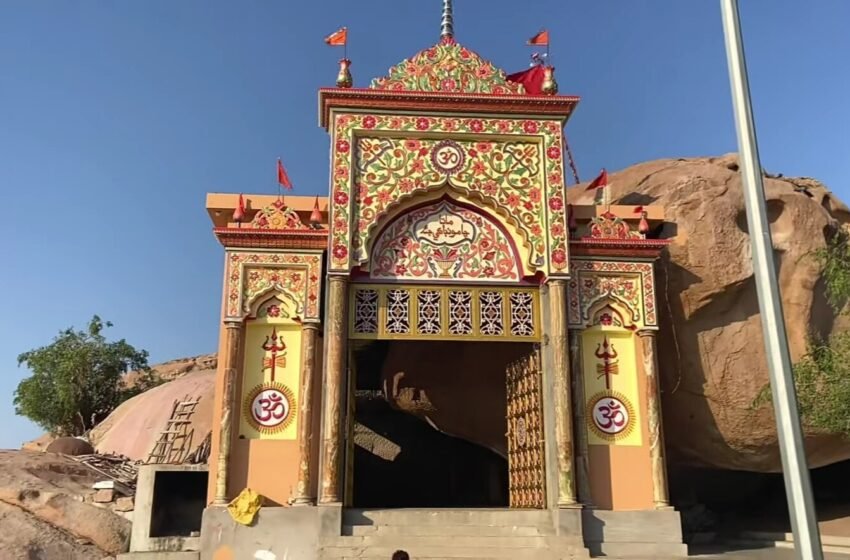
Rama Pir Mandir stands as a testament to centuries of devotion. This Hindu temple, dedicated to Ramdev Pir, exudes an air of reverence and mystique. The temple’s roots trace back to 1859, a time when the echoes of Ramdev Pir’s legacy resonated across the arid plains. Three and a half centuries after the saint’s passing in 1459 CE, a devout Hindu in Tando Allahyar made a solemn vow. His wish granted, he carried an earthen lamp from the original RamaPir temple in Ramdevra, Rajasthan (India), to this very spot in Pakistan. Here, he erected the temple, bridging the geographical gap with unwavering faith.

Within these ancient walls, devotees gather to honour Ramdev ji, also known as Rama Pir. Their voices rise in melodic bhajans, filling the night air. As dawn breaks, they hoist colourful flags (Dwaja), dancing to the rhythm of drums and trumpets. Thousands traverse the distance on foot, their hearts aflame with devotion. Ramdev Pir’s memory lives on, transcending borders and generations.
The temple’s white facade, adorned with intricate carvings, stands against the azure sky. Its marble spires reach for the heavens, a silent testimony to faith’s enduring grace. Pilgrims tread barefoot, their footsteps echoing through the courtyard. Here, time seems to pause, allowing pilgrims to glimpse eternity, The temple’ white facade adorned with intricate carvings stands against the azure sky, Pilgrims tread its hallowed halls, where time seems to pause, allowing glimpses of eternity, Amidst fervour and devotion, the RamaPir temple remains a beacon—a place where faith transcends boundaries, and souls find solace. The Rama Pir Mandir is a Hindu temple dedicated to Ramdev Pir, The Ramapir Mela is the second largest Hindu pilgrimage in Pakistan, following the Hinglaj yatra, which holds the top spot.
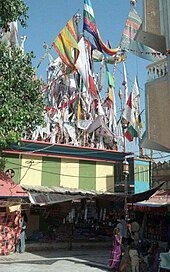
The temple was constructed in 1859, bridging a gap of three and a half centuries since the passing of Ramdev Pir in 1459 CE, According to a captivating legend, a devout Hindu in Tando Allahyar vowed to arrange a grand Mela (fair) in honour of Rama Pir if he was blessed with a child, His wish granted, he carried an earthen lamp from the original RamaPir temple in Ramdevra, Rajasthan, India, all the way to Tando Allahyar in present-day Pakistan. Here, he built the temple, connecting two lands with unwavering faith. Devotees gather, carrying “Dajja” (flags) in their hands, and recite “Bhajans” throughout the night, sitting outside the city.
At 5:00 AM, they hoist the “Dajja” at the temple, dancing to the beat of drums and trumpets. Thousands of pilgrims, including men, women, and children, travel barefoot to pay homage to Rama Pir. These colourful flags (Dwaja) are then proudly raised at the temple.
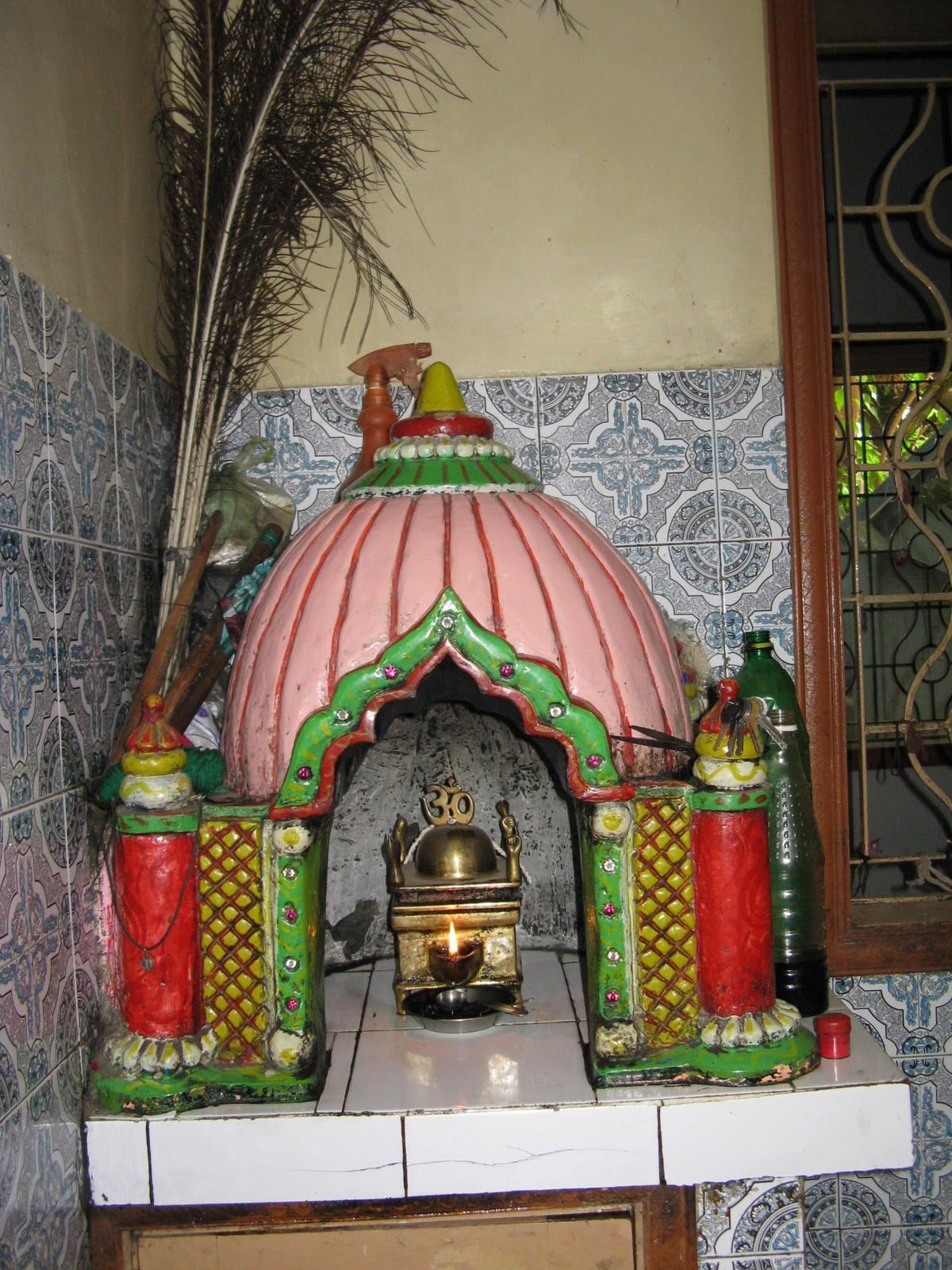
Pilgrims embarking on the Ramapir Mela pilgrimage to the RamaPir Temple in Tando Allahyar, Pakistan prepare with unwavering devotion and meticulous care. Here’s how they get ready for this sacred journey:
Pilgrims engage in fervent prayers, seeking blessings from Ramdev Pir. Some even observe fasts as a form of spiritual purification. Footwear: Since the pilgrimage involves walking barefoot, pilgrims ensure their feet are toughened and ready for the journey, Comfortable Clothing: Loose, breathable attire is preferred, allowing ease of movement during the long trek, Water and Food: Pilgrims carry water bottles and light snacks to sustain themselves along the way, Faith and Devotion: Pilgrims cultivate a deep sense of faith, knowing that their journey is an act of devotion.
The pilgrimage can be physically demanding, so mental resilience is essential, Pilgrims organise their travel to Tando Allahyar, ensuring they arrive in time for the Mela, Accommodation: They secure lodging near the temple or arrange for temporary shelters during the event, Flags (Dwaja): Pilgrims carry colourful flags, symbolising their connection to Rama Pir. These flags are later hoisted at the temple.
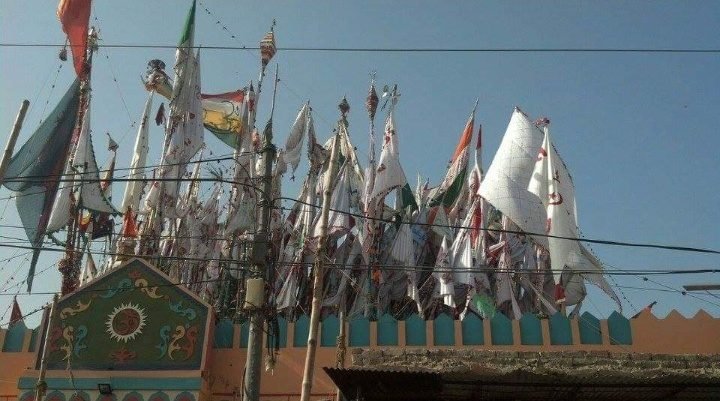
Some pilgrims bring earthen lamps, echoing the legend of the lamp carried from Ramdevra to Tando Allahyar.
Certainly! Pilgrims embarking on the Ramapir Mela pilgrimage to the RamaPir Temple in Tando Allahyar, Pakistan encounter several challenges along their sacred journey. Here are some common ones:
The pilgrimage involves walking barefoot for long distances, especially during the Ramapir Mela, The scorching sun and uneven terrain can take a toll on pilgrims’ stamina. The relentless heat of Tando Allahyar can be overwhelming, Pilgrims must stay hydrated and protect themselves from sunburn, The Mela attracts thousands of devotees, leading to crowded pathways and temple premises. Patience is essential as pilgrims navigate through the throngs.
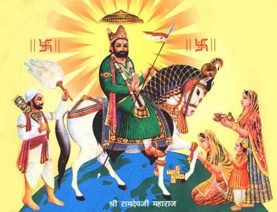
Arranging travel, accommodation, and food during the Mela can be daunting, Pilgrims often face limited facilities and basic amenities, The emotional intensity of the pilgrimage can be both uplifting and draining, Pilgrims grapple with their own doubts, fears, and hopes, Some pilgrims may experience fatigue, blisters, or minor injuries due to the arduous journey, Proper medical care and hygiene are crucial, Cultural and Language Differences: Cultural Bonding: The Mela fosters cultural exchange. Pilgrims from different faiths interact, breaking down stereotypes and fostering understanding. Diverse backgrounds converge, creating a rich tapestry of languages and customs, Despite differences, a sense of unity prevails—a reminder that they are all on a sacred journey. Pilgrims from diverse backgrounds come together, creating a rich tapestry of languages and customs, Communication barriers can pose challenges.
During the Ramapir Mela pilgrimage to the RamaPir Temple in Tando Allahyar, Pakistan, the community plays a vital role in overcoming obstacles. Let’s explore how:
Pilgrims come together as a united force, sharing their burdens and supporting one another. The collective spirit provides emotional strength during challenging moments, The Mela attracts thousands of devotees, leading to crowded pathways and temple premises. The community helps each other find their way, ensuring that no one feels lost or overwhelmed.
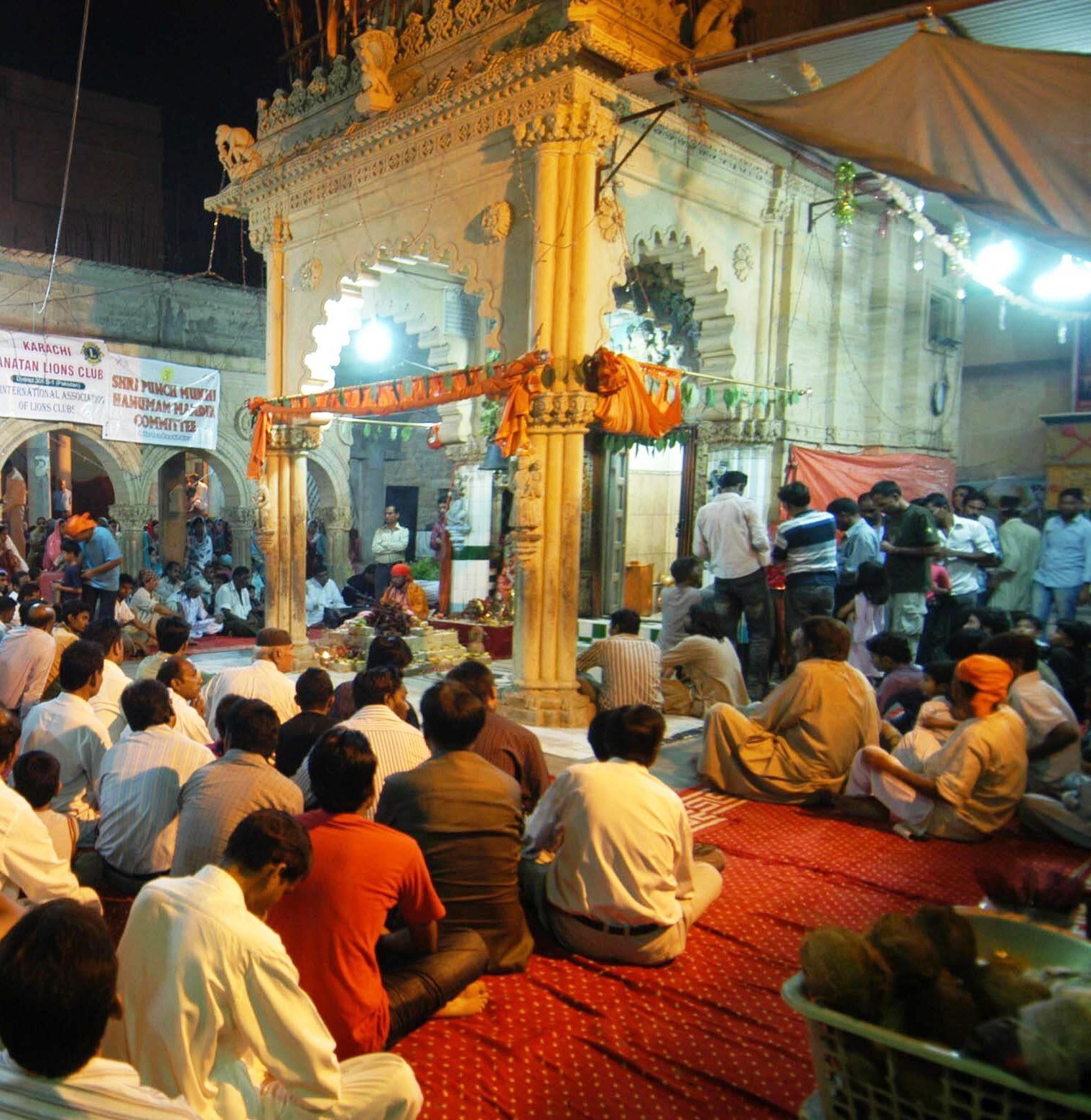
When pilgrims face fatigue or physical strain, fellow devotees offer assistance. A helping hand, a kind word, or a shared water bottle can make a significant difference. The community reinforces faith through shared rituals, prayers, and songs, Hearing others’ stories of devotion inspires pilgrims to persevere. In unfamiliar surroundings, the community acts as a protective shield, Pilgrims watch out for each other, ensuring safety and well-being.
The pilgrimage becomes a shared mission—a quest for blessings and spiritual fulfilment. Together, they overcome obstacles, knowing that their efforts benefit the entire community.
In the 14th century, Ramdev Pir (also known as Rama Pir), a revered Hindu saint, left an indelible mark on the hearts of devotees, According to legend, a devout Hindu man in Tando Allahyar vowed to arrange a grand Mela (fair) in honour of Rama Pir if he was blessed with a child, His wish granted, he embarked on an extraordinary journey. Carrying an earthen lamp from the original RamaPir temple in Ramdevra, Rajasthan, India, he traversed the vast expanse to Tando Allahyar in present-day Pakistan, Here, he built the temple, bridging geographical gaps with unwavering faith. The lamp symbolises unity, connecting two lands and two communities.
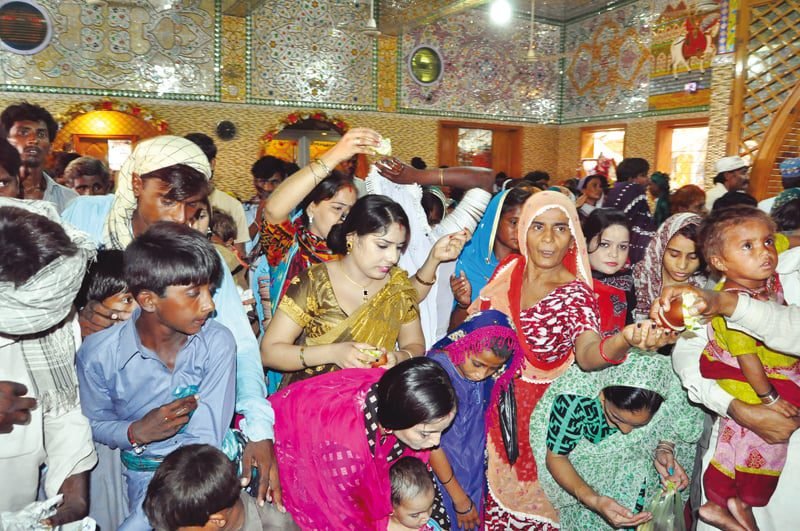
During the Ramapir Mela, devotees gather outside the city, carrying colourful flags (Dwaja) in their hands, Throughout the night, they recite “Bhajans”, their voices rising in melodic devotion, At dawn, precisely at 5:00 AM, they hoist the “Dajjal” at the temple. Drums beat, trumpets sound, and the air vibrates with spiritual energy, Thousands of pilgrims—men, women, and children—travel barefoot, their hearts aflame with reverence for Rama Pir.
Although Ramdev Pir was cremated in Rajasthan, his spirit transcends borders, The temple in Tando Allahyar stands as a testament to the enduring bond between communities, Hindus and Muslims alike recognize the temple’s sanctity, celebrating together during the annual Mela, Diverse backgrounds converge—the faithful, the curious, the seekers, Language, culture, and customs blend seamlessly as pilgrims share stories and prayers, The temple becomes a microcosm of unity, where communal differences dissolve in the light of devotion, The Ramapir Mela is not merely a physical journey; it’s a collective endeavour. Souls find solace here, drawing strength from the shared pilgrimage.

Amidst challenges, the community stands as a beacon—a place where faith bridges gaps and hearts beat as one.
The legend of the RamaPir Temple in Tando Allahyar, Pakistan has profoundly impacted interfaith relations in the region. Let’s explore how this ancient tale continues to weave threads of unity and understanding:
The temple’s construction in 1859, three and a half centuries after the passing of Ramdev Pir, symbolises a bridge between Hindu and Muslim communities, Despite religious differences, both communities recognize the temple’s sanctity and participate in the annual Ramapir Mela, The Mela attracts thousands of devotees—men, women, and children—from diverse backgrounds, Hindus and Muslims alike gather, sharing stories, prayers, and a common reverence for Rama Pir, The temple becomes a space where faith transcends boundaries, The legend of the earthen lamp carried from Ramdevra, Rajasthan, India, to Tando Allahyar in present-day Pakistan exemplifies unity, Pilgrims, regardless of their faith, participate in the rituals, hoisting colourful flags (Dwaja) at the temple, The temple’s existence stands as a testament to resilience and coexistence, Despite historical shifts and changing times, the spirit of RamaPir unites people beyond religious labels, The Ramapir Mela occurs over three days, drawing pilgrims barefooted to the temple. Here, they find solace, blessings, and a sense of belonging.
RamaPir Temple stands as a testament to unwavering faith, we find a tapestry woven by countless souls. Their footsteps echo through time, bridging the gap between Ramdev Pir’s ancient legacy and the present. As the sun sets, casting a golden hue upon the temple spires, we glimpse eternity—a place where devotion transcends boundaries, and hearts beat as one.


